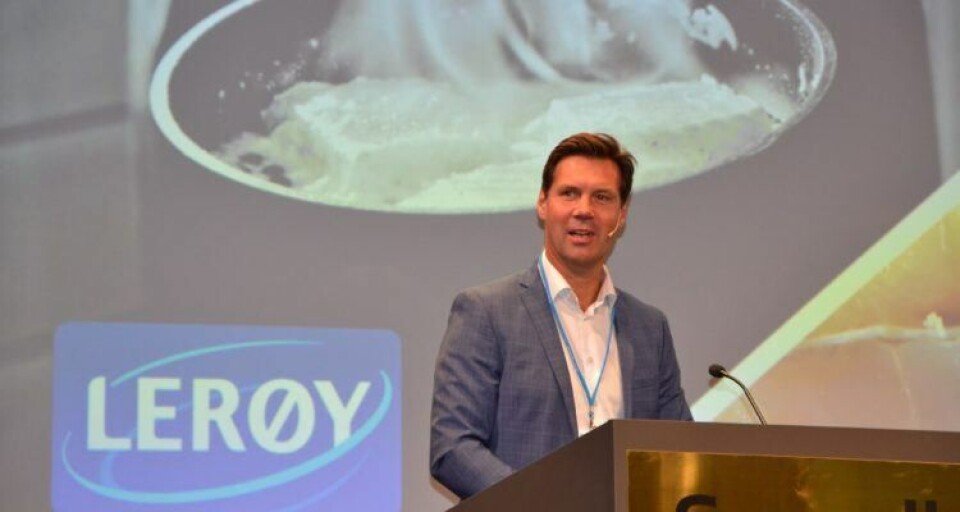
Lower volumes reduce Lerøy’s third-quarter profits
Lerøy Seafood Group (LSG), the world’s second-biggest salmon and trout farmer, has reported a reduced operating profit for the third quarter of 2018 compared to the same period the year before.
The farming segment of LSG, which owns a 50% stake in Scottish Sea Farms, made earnings before tax, interest and tax (EBIT) of NOK 660 million (£60.3m) in Q3 2018, down from NOK 861m (£78.7m) in Q3 2017.
The group, which also earns some of its income from fishing, blamed the fall on a decline in harvest volume of salmon and trout. LSG harvested 37,000 gutted weight tonnes (gwt) in Q3 2018, compared to 46,000 gwt in the same period in 2017.
Volatile prices
LSG also pointed to volatile salmon prices for the profit drop, and a failure of trout to match salmon prices. Trout sold for NOK 7 per kg less.
The farming segment made earnings before tax, interest and tax (EBIT) of NOK 569 million (£52m) in Q3 2018, down from NOK 715m (£65.3m) in Q3 2017.
“The Group’s production in the third quarter, and to date in the fourth quarter, reflects a good biological situation,” said LSG in its third-quarter report. “The Group’s standing biomass has in the third quarter gone from being 6% lower at 30 June 2018 than on the same date last year, to being 4% higher at 30 September 2018 compared with 30 September 2017.”
Increased biomass
“The biological production in the third quarter has been good,” said chief executive Henning Beltestad.
“Our harvest volume was low but we've capitalised on the good level of production with a significant increase in the biomass for subsequent harvesting.
“As previously communicated, the low volume means lower earnings for the quarter. However, we've paved the way for good earnings and a continuing positive development in release from stock costs going forward. We're experiencing high demand for our high-quality seafood, the market is strong, and we maintain our outlook for a harvest volume in Norway of 166,000 tonnes this year.”
Important role for SSF
The Q3 report said that LSG’s associates, the most significant of which is Scottish Sea Farms, play an important role, and that income from associates was NOK 43m (£3.9m) in Q3 2018, compared with NOK 47m (£42.9m) in Q3 2017.
LSG said costs in Q3 2018 were lower than in Q3 2017, a development expected to continue into Q4, but a lower realised price gave an EBIT/kg of NOK 15.3 for Q3 2018, roughly unchanged from NOK 15.5 in Q3 2017.
“Significant investments are currently being made in the farming segment to improve productivity throughout the value chain,” said LSG in its report.
“The new industrial facility in Lerøy Midt is now operational and, after the run-in phase, will strengthen the Group’s competitiveness throughout its integrated value chain. Building of RAS facilities for larger smolt in both Lerøy Aurora (Troms and Finnmark) and Lerøy Sjøtroll (Hordaland in southern Norway) is proceeding according to plan.”
Larger smolts
The investment in the RAS facility is “crucial to the development of Lerøy Sjøtroll”, said LSG. “The Group expects the larger, higher-quality smolt produced by the facility to improve productivity when the smolt are released to sea. The current estimate for harvest volume in 2018, including the share of LSG’s volume from associates, is 179,000 gwt.”
LSG’s current estimate for harvest volume in 2019, including the share of volume from Scottish Sea Farms, is 190,000 gwt.
Third-quarter results from Norwegian salmon farmer SalMar, which also owns 50% of Scottish Sea Farms, will be released tomorrow.























































